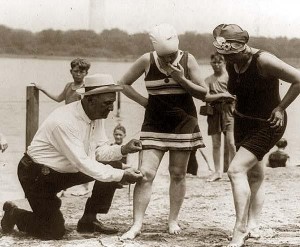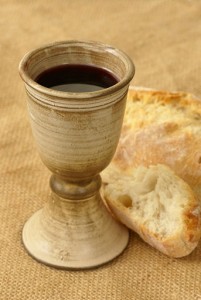
Reviewing Lent
With my apologies to the Marine Corps and their excellent “Earned-Never Given” motto, I want to share the Easter Homily of St. John Chrysostom. You may wonder if I am breezing by the passion and death to get to the resurrection. I offer the homily now because this is the time in which in which we come face to face with how well we lived Lent this year. This is the time in which we sometimes regret that we let Lent get away. This is the time in which we are feeling pretty good about our discipline and thinking we deserve a great Easter.
It’s all about Grace
I do think that there is a correlation between how well we have prepared in Lent and our celebration of the Triduum, but it is grace at work in us that is the is the cause of new found insight and discipline. The following homily captures perfectly the right Easter disposition.
In the words of St. John Chrysostom
If any man be devout and love God, let him enjoy this fair and radiant triumphal feast. If any man be a wise servant, let him rejoicing enter into the joy of his Lord. If any have labored long in fasting, let him now receive his recompense. If any have wrought from the first hour, let him today receive his just reward. If any have come at the third hour, let him with thankfulness keep the feast. If any have arrived at the sixth hour, let him have no misgivings; because he shall in nowise be deprived therefor. If any have delayed until the ninth hour, let him draw near, fearing nothing. If any have tarried even until the eleventh hour, let him, also, be not alarmed at his tardiness; for the Lord, who is jealous of his honor, will accept the last even as the first; he gives rest unto him who comes at the eleventh hour, even as unto him who has wrought from the first hour.
And he shows mercy upon the last, and cares for the first; and to the one he gives, and upon the other he bestows gifts. And he both accepts the deeds, and welcomes the intention, and honors the acts and praises the offering. Wherefore, enter you all into the joy of your Lord; and receive your reward, both the first, and likewise the second. You rich and poor together, hold high festival. You sober and you heedless, honor the day. Rejoice today, both you who have fasted and you who have disregarded the fast. The table is full-laden; feast ye all sumptuously. The calf is fatted; let no one go hungry away.
Enjoy ye all the feast of faith: Receive ye all the riches of loving-kindness. let no one bewail his poverty, for the universal kingdom has been revealed. Let no one weep for his iniquities, for pardon has shown forth from the grave. Let no one fear death, for the Savior’s death has set us free. He that was held prisoner of it has annihilated it. By descending into Hell, He made Hell captive. He embittered it when it tasted of His flesh. And Isaiah, foretelling this, did cry: Hell, said he, was embittered, when it encountered Thee in the lower regions. It was embittered, for it was abolished. It was embittered, for it was mocked. It was embittered, for it was slain. It was embittered, for it was overthrown. It was embittered, for it was fettered in chains. It took a body, and met God face to face. It took earth, and encountered Heaven. It took that which was seen, and fell upon the unseen.
O Death, where is your sting? O Hell, where is your victory? Christ is risen, and you are overthrown. Christ is risen, and the demons are fallen. Christ is risen, and the angels rejoice. Christ is risen, and life reigns. Christ is risen, and not one dead remains in the grave. For Christ, being risen from the dead, is become the first fruits of those who have fallen asleep. To Him be glory and dominion unto ages of ages. Amen.
In the Orthodox Tradition
It is the custom in Orthodox traditions to read the homily at the Easter Sunday liturgy. Click here to listen
The flower in the picture is nick-named the Lenten Rose and you can spot them in gardens all over our area. They really are well-matched in color and in the early bloom to the Lent-Easter cycle.
 As the temperature inched toward 90 this week, I’m sure we all started dreaming about warm, sunny days at the beach with friends and family!
As the temperature inched toward 90 this week, I’m sure we all started dreaming about warm, sunny days at the beach with friends and family!





